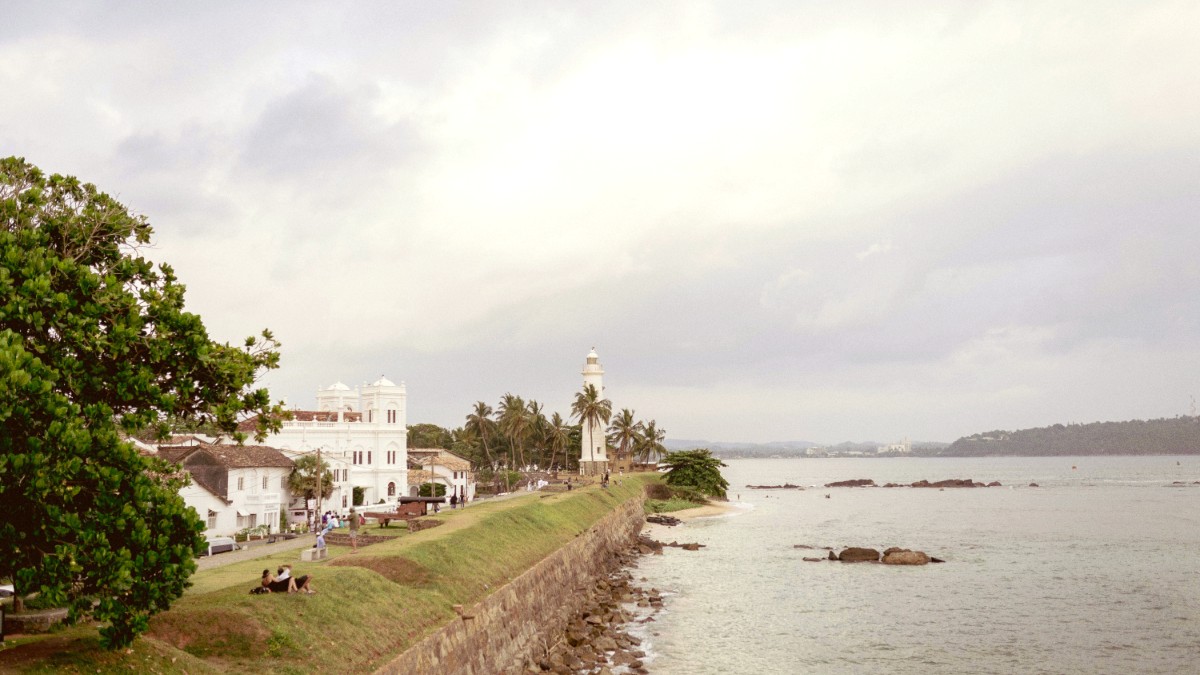
The South, Sri Lanka
Sri Lankan cuisine evolved through centuries of trade and colonial rule, blending flavors from India, Southeast Asia, and European powers. Rice is the staple, served with an array of curries.
Coconut milk is a main ingredient, giving curries their signature rich, creamy texture. Spices like cinnamon, cardamom, cloves, turmeric, chili, and curry leaves are prominent.
Rice, coconut (milk, oil, shredded), a variety of vegetables (jackfruit, eggplant), fresh fish, chicken, and lentils (dhal) are core components. Fresh spices and herbs are used generously.
Sri Lankan food is often spicy and savory, often with a balance of sweet, sour, and bitter notes. 'Goraka' imparts an unique sourness to fish curries, 'rampe' a fragrant aroma.
Breakfast often features hoppers or string hoppers. Lunch is usually the largest meal. Dinner is similar to lunch or features lighter options like kottu or rotti.
The national dish. A large portion of rice with multiple small bowls of various curries—meat/fish, vegetables, dhal, sambol, and papadum. Find it widely at local eateries.
A complete, balanced meal with different flavors.
A popular street food. Shredded flatbread stir-fried with chopped vegetables, eggs, and your choice of meat. Often cheese is added.
The preparation is noisy, with rhythmic metal blade clatter.
Hoppers are bowl-shaped rice flour pancakes, crispy at edges, soft in middle. Egg hoppers feature a runny egg. String Hoppers are steamed rice noodle nests. Both with curries/sambol.
Sambol, a fresh relish, is essential. Try Pol Sambol, Seeni Sambol, Lunu Miris.
Special sweets and milk rice (Kiribath) are prepared and shared, showing the cultural significance of food in Sri Lankan life.
Pickled fruits or vegetables, a blend of sweet, sour, and spicy flavors.
Elegant settings with refined local and international cuisine.
Quality meals at accessible prices, often with an unique twist.
Authentic, inexpensive meals and quick snacks.
Many restaurants within Galle Fort cater to diverse palates. You will find Italian, Western, and Asian fusion choices.
Unawatuna also presents a wide range of international restaurants.
Galle Fish Market: A lively and authentic place to see the day's catch, especially in the early morning.
Poonie's Kitchen (Galle Fort): Good for lunch, healthy options, pleasant courtyard.
Enjoy sophisticated dining in colonial ambiance.
Discover fresh, healthy options in charming courtyards.
Experience bustling roadside eateries for local favorites.
Taste international cuisines catering to diverse preferences.
Kosher food options are very limited or non-existent in Galle. Travelers requiring Kosher food should plan to bring their own packaged meals or stick to fresh produce.
Be aware that cross-contamination can be an issue in smaller local kitchens where space and separate cooking areas might be limited.
You can ask for "Halal" food or look for Halal certification at various eateries.
If Kosher is a strict requirement, bringing your own packaged meals is a very good plan.
Several guesthouses and local families in Galle and Unawatuna present traditional Sri Lankan cooking classes.
Local guides might offer food tours, focusing on street food exploration and visits to bustling local markets.
Direct farm visits are less common in Galle itself. Day trips to surrounding countryside may include spice gardens or tea plantations.
If your visit aligns with a local event, you will have opportunities to sample unique seasonal foods.
Many spots blend traditional flavors with contemporary culinary presentation.
A cuisine shaped by trade routes, blending Indian, Southeast Asian, and European flavors, with rice as the staple.
From fine dining in colonial hotels to bustling street food stalls, Galle caters to all tastes and budgets.
Cooking classes and local market visits immerse you in the culinary culture.
Always try to sample local fruit juices; they are fresh and plentiful. Mango, papaya, and passion fruit are seasonal favorites. King coconut water is a must-try for natural refreshment.